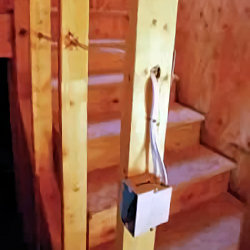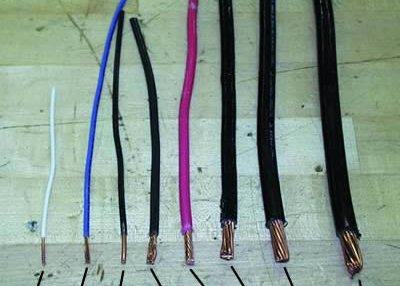Control Inadequate Wiring Hazards
Electrical hazards result from using the wrong size or type of wire. You must control such hazards to create a safe work environment. You must choose the right size of wire for the amount of current expected in a circuit. The wire must be able to handle the current safely. The wire's insulation must be appropriate for the voltage and tough enough for the environment. Connections need to be reliable and protected.
Fixed Wiring
Fixed, permanent wiring is better than extension cords, which can be misused and damaged more easily.
NEC requirements for fixed wiring should always be followed. A variety of materials can be used in wiring applications, including nonmetallic sheathed cable (Romex®), armored cable, and metal and plastic conduit. The choice of wiring material depends on the wiring environment and the need to support and protect wires.
Aluminum wire and connections should be handled with special care. Connections made with aluminum wire can loosen due to heat expansion and oxidize if they are not made properly. Loose or oxidized connections can create heat or arcing. Special clamps and terminals are necessary to make proper connections using aluminum wire. Antioxidant paste can be applied to connections to prevent oxidation.
Flexible Wiring
Electrical cords supplement fixed wiring by providing the flexibility required for maintenance, portability, isolation from vibration, and emergency and temporary power needs.

Flexible wiring can be used for extension cords or power supply cords. Power supply cords can be removable or permanently attached to the appliance.
DO NOT use flexible wiring in situations where frequent inspection would be difficult, where damage would be likely, or where long-term electrical supply is needed. Flexible cords cannot be used as a substitute for the fixed wiring of a structure.
Flexible cords must not be:
- run through holes in walls, ceilings, or floors;
- run through doorways, windows, or similar openings (unless physically protected);
- attached to building surfaces (except with a tension take-up device within six feet of the supply end);
- hidden in walls, ceilings, or floors; or
- hidden in conduit or other raceways.
Knowledge Check Choose the best answer for the question.
7-4. Why is fixed, permanent wiring preferred over the use of extension cords?
You forgot to answer the question!

